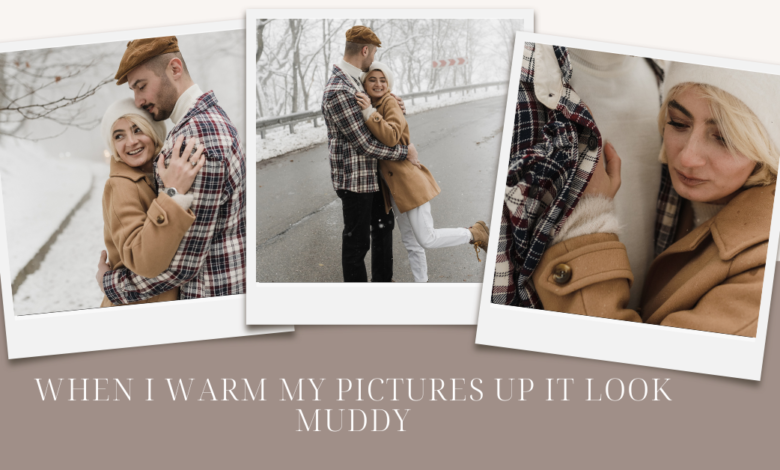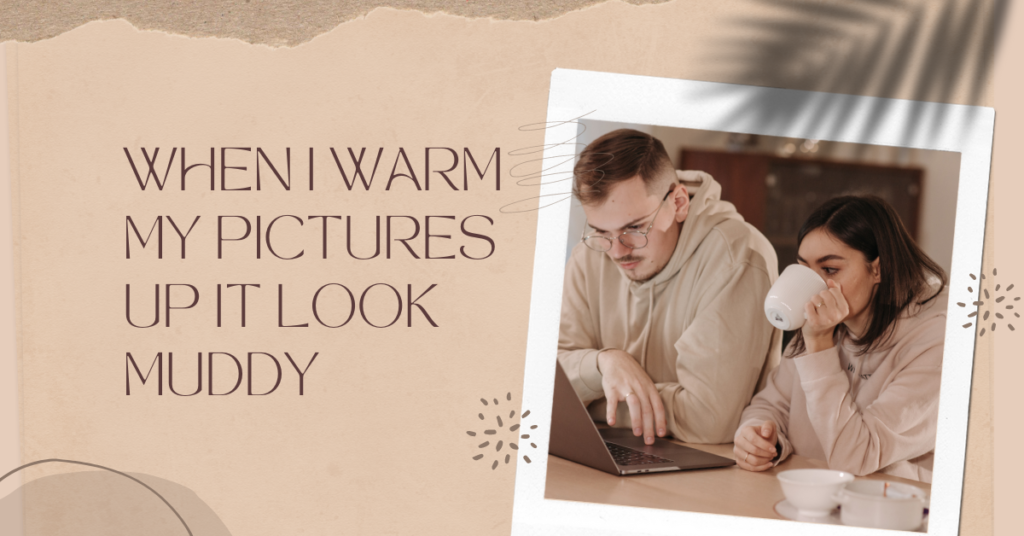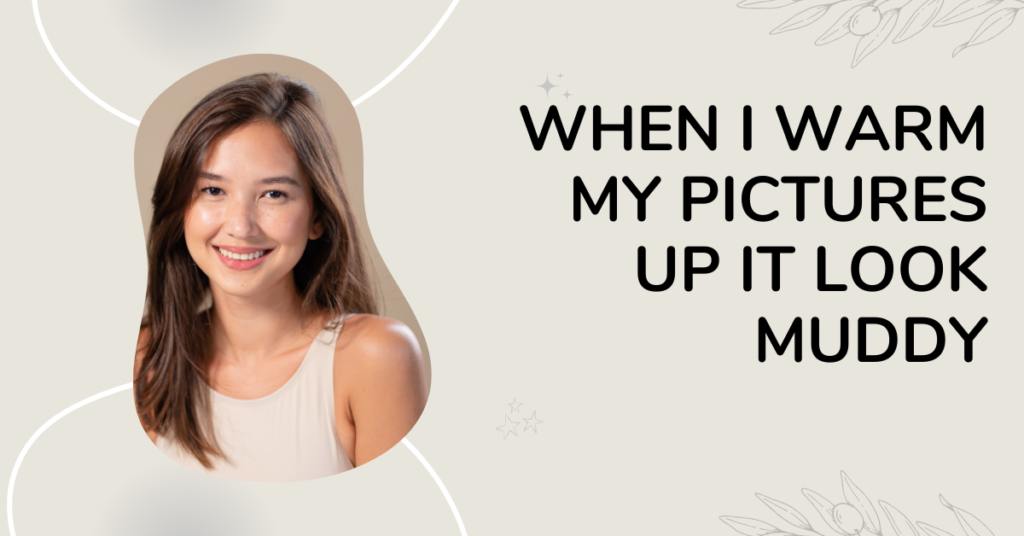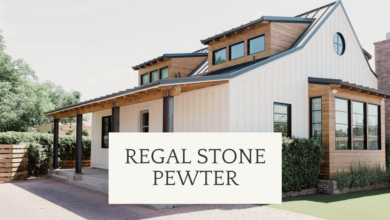When I Warm My Pictures Up It Look Muddy

When i warm my pictures up it look muddy Photography is an artwork that captures moments with precision and emotion. One famous approach to awaken warmth and ambiance is adjusting the color temperature to give pix a warmer tone. However, many photographers come across a not unusual issue: warming up pics often ends in a muddy appearance. This article explores why this takes place and a way to acquire heat, vibrant pictures without sacrificing clarity.
Understanding Color Temperature in Photography
Color temperature refers back to the hue of a specific form of mild supply, measured in Kelvin (K). In pictures, adjusting color temperature can dramatically adjust the temper and experience of a picture. Warmer temperatures (lower Kelvin values) upload reds, oranges, and yellows, growing a comfortable and inviting ecosystem. Cooler temperatures (higher Kelvin values) introduce blues and veggies, giving pictures a crisp and serene look.
The Science Behind Color Temperature
Light sources emit exclusive shade temperatures. For example:
Incandescent bulbs emit warm light (~2700K).
Daylight is impartial to barely heat (~5000K).
Overcast skies emit cooler light (~6500K).
Understanding these versions allows photographers to control shade balance efficiently during enhancing.
Why Warming Up Photos Can Make Them Muddy
While warming up pics can decorate their appeal, flawed adjustments may additionally result in a muddy look. Here’s why:
Overuse of Warm Filters
Applying excessive warm filters can weigh down the picture, overlaying information and lowering evaluation. This creates a flat, dead look, making the image seem muddy.
Poor White Balance Settings
Incorrect white stability settings for the duration of taking pictures or editing can introduce undesirable coloration casts. These casts blend colorations improperly, leading to muddiness.
Lack of Contrast Adjustment
Warming up pix without adjusting assessment can lessen the difference between mild and dark regions. This lack of intensity contributes to a muddy experience.
Noise Amplification
Increasing warmth can every so often enlarge noise, in particular in low-mild pictures. This graininess blends colorings, in addition obscuring info.
Techniques to Warm Up Photos Without Losing Clarity

Achieving heat images without muddiness entails careful changes and attention to detail. Here are effective techniques:
-
Adjust White Balance Carefully
Start by means of setting an appropriate white balance. Use the Kelvin slider to feature warm temperatures progressively. Avoid intense shifts to keep color accuracy.
-
Use Selective Color Adjustments
Instead of uniformly warming the entire picture, target unique shade tiers. Tools like HSL (Hue, Saturation, Luminance) permit particular modifications, retaining detail.
Three. Enhance Contrast and Clarity
After warming, improve evaluation and readability to enhance details. This separation of tones prevents the photo from looking flat and muddy.
-
Apply Graduated Filters
Use graduated filters to heat precise areas, including the sky or foreground. This selective approach maintains average photograph stability and stops excessive warm temperature.
Five. Reduce Noise
Utilize noise reduction tools to decrease graininess. Clean images manage shade modifications higher, making sure warmth doesn’t translate to muddiness.
-
Layer Adjustments
Work with adjustment layers to great-music warm temperature without affecting the whole image. This non-unfavourable method lets in for precise control and easy corrections.
Tools and Software Recommendations
Choosing the proper gear is crucial for powerful image modifying. Here are a few top software program alternatives:
Adobe Lightroom
Lightroom gives sturdy coloration correction equipment, together with white balance sliders and selective color adjustments. Its intuitive interface suits both beginners and experts.
Adobe Photoshop
Photoshop gives superior modifying skills. Features like layers, mask, and blending modes enable targeted color manipulation without compromising image fine.
Capture One
Known for amazing shade grading, Capture One offers specific manipulate over color temperature and selective adjustments, making it ideal for warming pictures.
Affinity Photo
A price-powerful opportunity, Affinity Photo provides powerful enhancing tools. Its comprehensive features support problematic color adjustments and noise reduction.
GIMP
As a loose alternative, GIMP gives essential color correction tools. While much less intuitive, it is a feasible desire for the ones on a price range.
Best Practices for Color Adjustment

Following pleasant practices guarantees your snap shots keep clarity even as accomplishing the preferred warm temperature. Consider those tips:
Calibrate Your Monitor
Accurate color illustration starts off with a calibrated monitor. Regular calibration guarantees your edits translate properly across exclusive devices and prints.
Shoot in RAW
RAW documents preserve most statistics, supplying extra flexibility at some point of editing. This layout lets in specific adjustments without degrading photo nice.
Make Incremental Changes
Apply adjustments step by step. Small, incremental modifications save you over-enhancing, preserving the natural appearance of the image.
Use Presets Judiciously
Presets can accelerate editing, but keep away from depending entirely on them. Customize presets to suit every picture’s unique desires, ensuring tailored outcomes.
Maintain a Balanced Exposure
Proper exposure all through taking pictures reduces the need for intense changes. Balanced lighting fixtures preserves detail and minimizes the risk of muddiness.
Common Mistakes to Avoid
Avoiding common pitfalls can enhance your image modifying process. Be conscious of those errors:
Excessive Warmth
Adding an excessive amount of warmth distorts colorations and obscures details. Aim for a diffused warmth that enhances without overpowering.
Ignoring Contrast
Neglecting comparison adjustment leads to flat photos. Always modify evaluation to complement coloration temperature changes.
Overlooking White Balance
Incorrect white stability undermines shade accuracy. Ensure right white stability earlier than making in addition coloration changes.
Relying Solely on Filters
Using filters as a one-length-suits-all solution can result in inconsistent and moody snap shots. Combine filters with guide adjustments for higher results.
Skipping Noise Reduction
Ignoring noise can amplify muddiness, especially in low-light images. Apply noise discount carefully to keep clarity.
Frequently Asked Questions (FAQs)
- What reasons do pix to look muddy when warmed up?
Excessive warmth, terrible white balance, lack of comparison, and accelerated noise could make snap shots seem muddy.
- How can I save your photos from turning into muddy while warming them up?
Adjust white stability cautiously, decorate comparison, use selective color adjustments, and decrease noise to preserve readability.
Three. Which software is great for warming up pictures without dropping detail?
Adobe Lightroom and Capture One are awesome selections for precise coloration modifications without compromising elements.
- Is it better to adjust shade temperature in-digital camera or for the duration of publish-processing?
Post-processing gives greater flexibility and control, taking into consideration precise changes without affecting the authentic image.
- Can including warm temperature to images affect the general temper?
Yes, including warmth can create a cozy and welcoming ecosystem, improving the emotional effect of the picture.
- How essential is display calibration in photograph enhancing?
Monitor calibration is crucial for correct coloration illustration, making sure your edits appear constant throughout distinctive devices.
- Are there any presets that may assist heat up photos correctly?
Yes, many presets are designed to add warmth. However, customize them to fit every picture’s unique requirements.
- What is the precise percent of passive voice in a piece of writing?
Keeping passive voice underneath 21% guarantees clarity and engagement in writing.
- How do I regulate white stability in Lightroom?
In Lightroom, use the white balance sliders or select a preset that suits your lighting conditions for accurate changes.
- Can selective color modifications assist in warming up photographs?
Absolutely. Selective coloration modifications target specific colors, permitting unique warming without affecting the whole image.
Conclusion
Warming up photos can beautify their emotional attraction, making them extra inviting and colorful. However, attaining this without resulting in muddy pics requires a balanced approach. By cautiously adjusting white balance, improving evaluation, the use of selective color equipment, and minimizing noise, photographers can heat their photographs correctly even as preserving readability and element. Leveraging the right software and adhering to fine practices similarly ensures professional and visually attractive effects. Embrace these techniques to transform your pictures, taking pictures at a warm temperature without compromising nice.



